Posted: February 15, 2013 | Author: Chus Martinez | Filed under: Chus Martinez, fetishism, sex, toilet love | Tags: BDSM, bondage, collar, corporal punishment, cross-dressing, cuckold, D&s, dehumanisation, dog collar, dominance, dominance and submission, dominants, dominated, dominatrix, dommes, doms, dungeon, erotic, erotic humiliation, feminization, fetishes, forniphilia, golden showers, human pony play, human toilet, K9, objectification, pleasure, pony play, public humiliation, pup play, sadomasochism, safe word, sexual slavery, sissymaid, submission, subs, sumissives, switch, trampling, verbal humiliation, whipping |

Dominance and submission (also called D&s, Ds, and D/s) is a set of behaviours, customs and rituals involving the giving by one individual to another individual of control over them in an erotic episode or as a lifestyle.
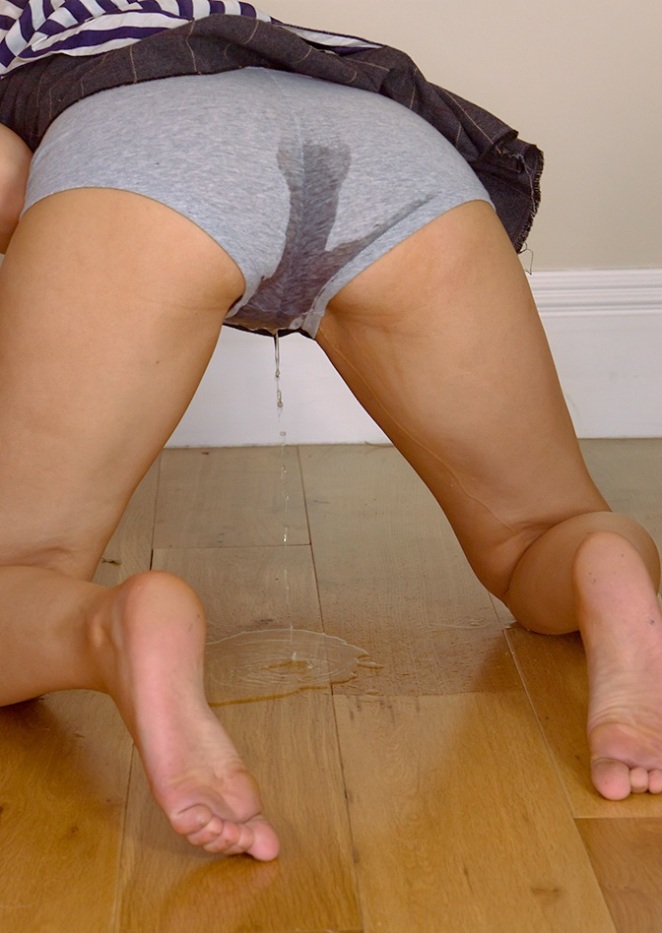
Physical contact is not a necessity, and it can even be conducted anonymously over the telephone, email or other messaging systems. In other cases, it can be intensely physical, sometimes traversing into sadomasochism. In D/s, both parties take pleasure or erotic enjoyment from either dominating or being dominated. Those who take the superior position are called dominants, doms (male) or dommes (female), while those who take the subordinate position are called submissives or subs (male or female). A switch is an individual who plays in either role. Two switches together may negotiate and exchange roles several times in a session. “Dominatrix” is a term usually reserved for a female professional dominant who dominates others for pay.

Dominance and submission, and the inner conflict and surrender connected with these are enduring themes in human culture and civilization. In human sexuality this has broadened to include mutual exploration of roles, emotions and activities that would be difficult or impossible to do without a willing partner taking an opposing role.

A 1985 study suggests that only about 30% of participants in BDSM activities are females. A 1995 study indicates that 89% of heterosexual females who are active in BDSM expressed a preference for a submissive-recipient role in sexual bondage, suggesting also a preference for a dominant male, and 71% of heterosexual males preferred a dominant-initiator role.

A safe word is usually given to the submissive partner to prevent the dominant from overstepping physical and emotional boundaries. The safe word is especially important when engaging in verbal humiliation or playing ‘mind-games’ because the submissive may not be aware of an emotional boundary until it is crossed. If an emotional boundary is breached and the safe word called, the dominant should cease all play immediately and discuss the emotional breach with the submissive in a tender and understanding manner. Negotiating limits in advance is also an important element in a D/s relationship.

It is important to note that for a safe, sane and consensual environment to be maintained, all participants should have a safe word of which the other is aware; this includes the dominant partner. While it may not seem so from the outside, Dominants will also have limits and boundaries of their own, and should not only have a safe word, but be comfortable calling it if their own limits are exceeded. This includes cases where the dominant may feel things have gone too far, and are uncomfortable continuing. As with a safe word call from any other, it should herald the stopping all play and a recuperative discussion between the participants.

There can be any number of partners in a D/s relationship, in some cases with one dominant sometimes having several submissives, who may in turn dominate others, or a submissive sometimes may have multiple dominants. Relationships may be monogamous or polyamorous. Romantic love is not necessarily a feature in D/s, partners might be very much in love or have no romantic relationship at all.
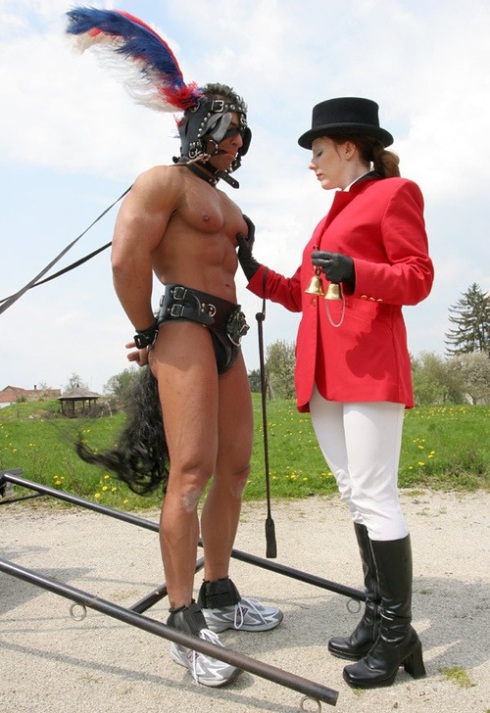
Variation in D/s is virtually limitless and the activities take many forms. These may include: domestic servitude or consensual slavery, enforced chastity of the submissive, erotic humiliation, sexual slavery, verbal humiliation, fetishes, such as shoe/boot worship, dehumanisation (pony or animal play) or objectification (forniphilia, becoming an ‘inanimate object’ such as a foot stool), cross-dressing, whipping, corporal punishment, trampling, human toilet – golden showers, feminization, cuckold, bondage (sexual), public humiliation.

These may be combined with other forms of BDSM. A classic example of D/s is the sissymaid, where an adult male dresses in cartoonish female clothing and performs stereotypical female chores such as housecleaning or serving tea. It should be noted that cross-dressing in D/s does not always involve a desire to be sissified or made into caricatures of women or to serve; for example, others may desire to be made as beautiful as possible and interact on a “girlfriend-to-girlfriend” non-sexual basis. Consent is a vital element in all psychological play, and consent can be granted in many ways.

Some people maintain a special room or area, called a dungeon, which contains special equipment (shackles, handcuffs, whips, queening stools and spanking benches or a Berkley horse, for example) used for play scenes, or they may visit a BDSM club that maintains such facilities.
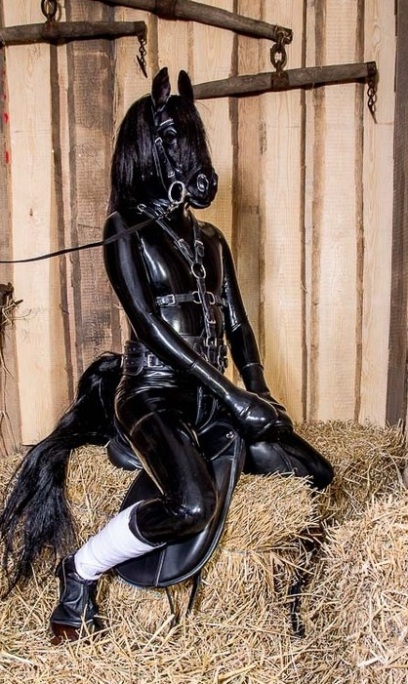
Many submissives wear a “collar” to denote their status and commitment. It can be much like a wedding band, except that only the submissive partner wears one. The traditional collar is a neck band in leather or metal, chosen, designed or even crafted by the dominant partner. Some subs wear a “symbolic collar”, often a bracelet or ankle chain, which is more subdued than the traditional collar and can pass in non-BDSM situations. It is not uncommon for a sub to have several collars for special occasions. Dog collars are integral for K9 role-playing—pup-play.
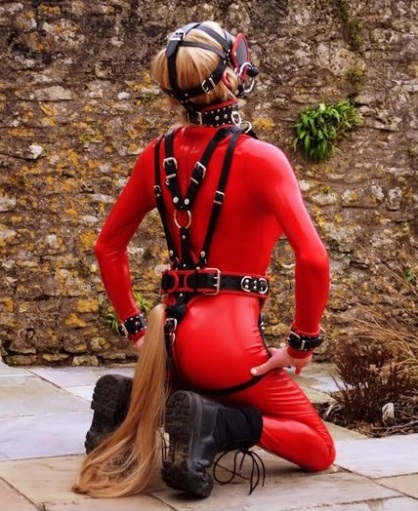
Posted: February 12, 2013 | Author: Chus Martinez | Filed under: Chus Martinez, fetishism, sex | Tags: animal dance, animal role play, animal roleplay, Aristotelian perversion, autozoophilia, BDSM, Bizarre, Bizarre Magazine, body modification, bondage, Born In A Barn, breeding partner, cages, cart ponies, catgirl, Cheyenne, cow play, De Ferre, dog collar, dom, dominance, dominant, dressage, erotic play, erotic target location errors, handler, human pony play, hybrids, impregnation, John Willie, Julia Tuell, kitten play, lactation, leash, leather culture, master, paraphilia, pet-play, Petgirls, Pony Passion, pony play, pony play club, ponyism, pup play, rider, riding ponies, role play, show ponies, Simon Benson, sub, submissive, trainer, training, were-creature, zoophilia |
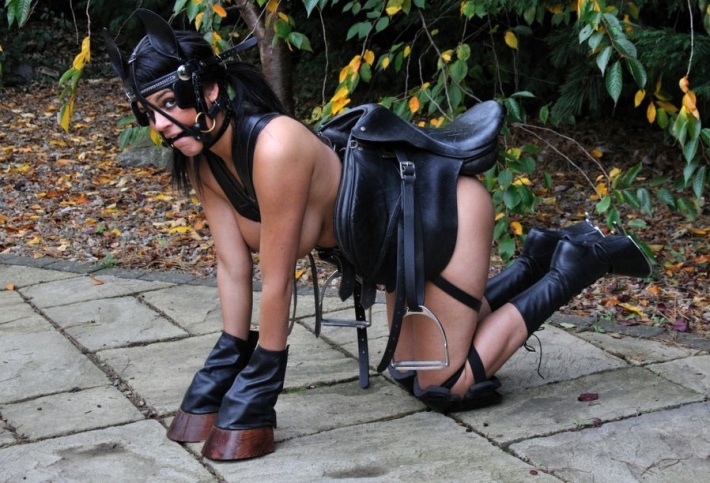
Animal role-play encompasses both non-sexual and erotic sexual role-play (when it may also be called pet-play, pony play, ponyism, kitten play, or pup play). In its erotic sexual role-play form, one or more of the participants takes on the role of a real or imaginary animal in character, including appropriate mannerisms and behaviour, and sometimes a partner will act as another animal, or, in a sexual context, may take the role of rider, trainer, or caretaker (or even breeding partner).

The principal theme of animal role-play is usually the voluntary transformation of a human being to animal status, and focus on the altered mind-space created. The most common examples are probably canids (pup, dog, wolf), felines (cat, kitten, lion) or equines (pony, horse). Animal roleplay is also used in a BDSM context, where a person may be humiliated by being treated as an animal.
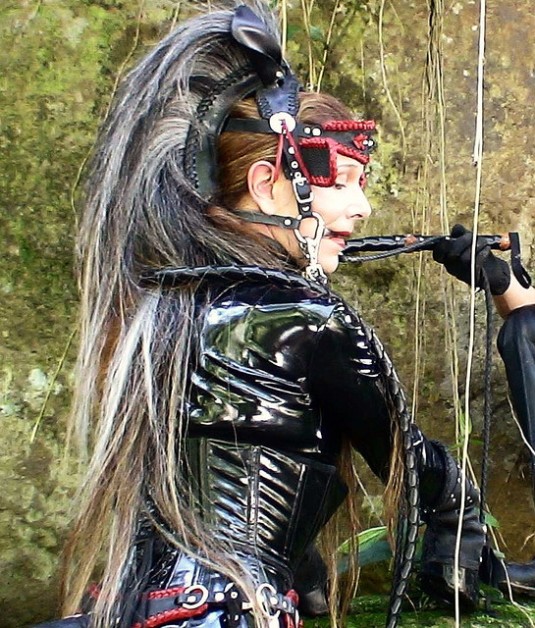
Animal role-play is influenced by costuming, fiction, myth and legend, role-play and psychodrama in their various aspects. Some of the earliest published images of animal play (especially pony play) are to be found in the work of John Willie, primarily in BIZARRE magazine published from 1948 to 1959. The first commercial manifestation of this fetish appears to have been created by Simon Benson the founder of the Petgirls website.

Non-sexual animal roleplay, or therianthropy, was a common and integral part of ritual in many tribal cultures both in recent and past times, where a member (or members) of the tribe would take the role physically and often spiritually, of an animal that was either revered, or hunted. Examples of the former include many of the American Indian tribes and Arctic native peoples, examples of the latter are evidenced by cave paintings. In 1911 Julia Tuell photographed the last Animal Dance (“Massaum”) performed by the Northern Cheyenne of Montana.
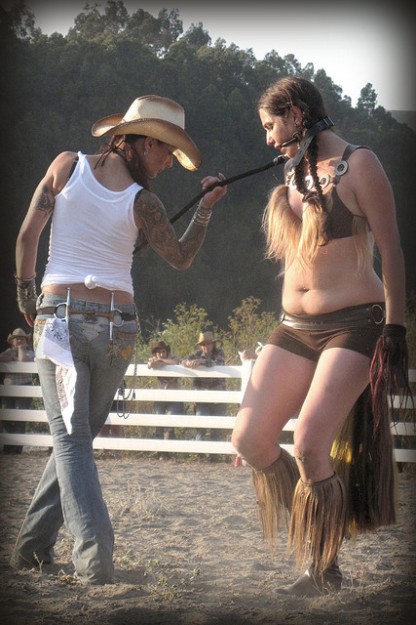
Like much of erotic play and role-play, animal role-play in an erotic or relational context is entirely defined by the people involved and by their mood and interests at the time of play. It ranges from the simple imitation of a vocal whinnying of a horse to the barking, panting or playful nudging of a puppy, or playful behaviour of a kitten, to crawling around on all fours and being fed, or petted, by hand,to the greater extremes of dressing up as a pony in modified horse tack, masks, prosthetics and temporary bondage based body modification.

Public participation in human animal role-play is varied. A couple could inconspicuously role-play a silly but loving pet play scene in public, but it would look like one partner is merely stroking the other’s neck innocently to the casual observer. In the case of many convention-going furries and some BDSM fetishists, one partner may wear a dog collar with a leash attached.

The reasons for playing such a character or animal can vary as much as the actual physical manifestations and intensity of the play. Some people enjoy being able to “cut loose” into a different, or more dynamic personality (e.g., Were-creatures or Catgirls). In some cases, pet-play is seen as a loving, quiet cuddling time where there is no need for verbalizations and the simple act of stroking, rubbing and holding the other partner is satisfying or reassuring in and of itself. For others, there may be a spiritual side to it. Some feel closer to their animal totem, while others may identify with something akin to a deeper side or part of their own psyche For still others, there is the experience of power exchange set up in a context or structure which they can accept.

While not widespread, erotic human-animal role-play is still enjoyed by a sizable number of people. However, it is still primarily identified with BDSM practice, or as being associated with furry or other alternative lifestyle activities.
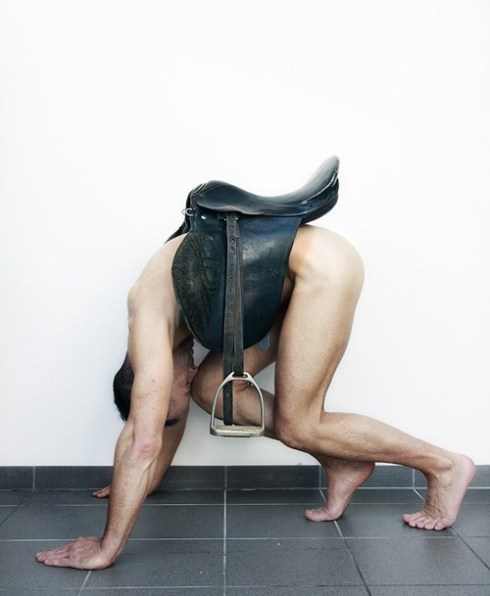
Autozoophilia is sexual arousal that depends on acting out or imagining one’s self as an animal. Paraphilic interests that involve being in another form have been referred to as Erotic Target Location Errors (ETLEs), and autozoophilia would represent an autoerotic form of zoophilia.
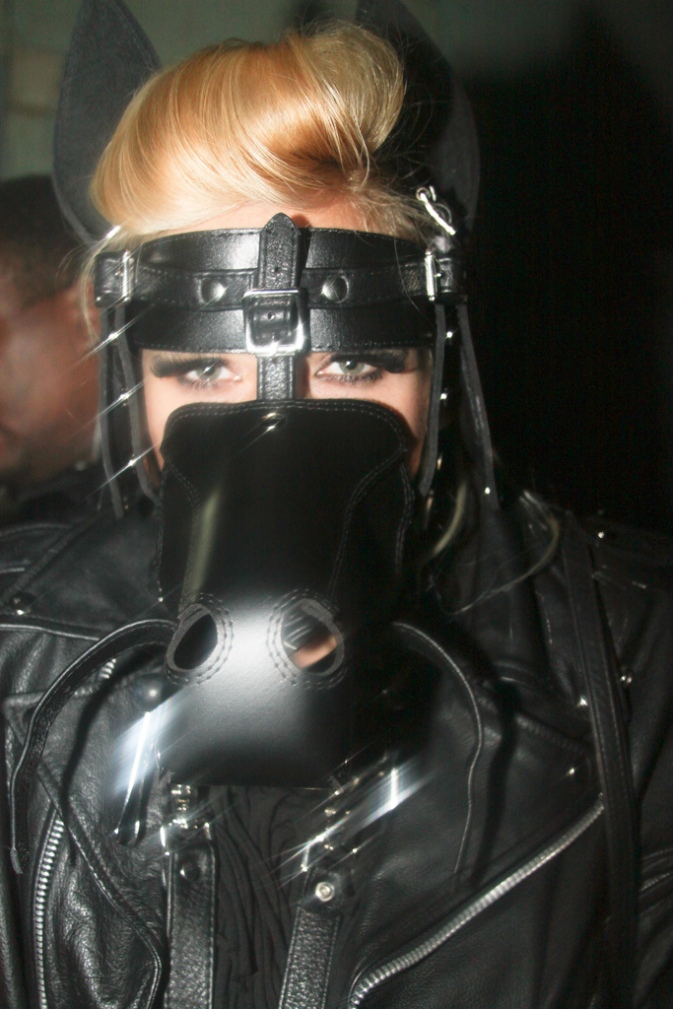
It should be pointed out that each type of play can focus on a certain “strength” of an animal character. Pony play often involves the practice and training that a horse owner or trainer would put their horse through to learn how to walk, canter, etc., as modified for human limbs. Puppy play often can involve BDSM related discipline. Cow Play often involves fantasies of lactation and impregnation. The usual limits of safe, sane and consensual apply to role-play as much as any other activity between humans who accept and respect their partner’s interests and limits. For most, this does not include bestiality.
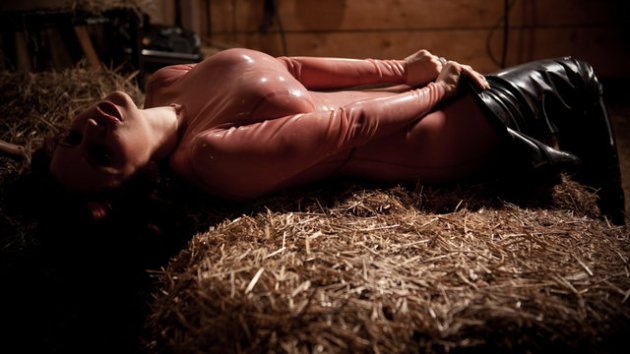
Note: Just because one partner is playing the “pet” does not necessarily make them the passive or submissive play partner in the scene. For example, if the form of pet play is for the meek and timid wife to “transform” into a werewolf or mischievous anime catgirl, she may take the upper hand and dominate the partner.

Some people believe that they have certain animal ‘instincts’ and through animal role-play can let them out. This is especially true in the BDSM communities, where some people ‘live’ as their chosen animal 24/7. This type of mentality goes beyond role-play and becomes a full lifestyle for the parties involved. There are also ‘hybrids’. These are humans who live part-time as one type of animal, and part-time as another.
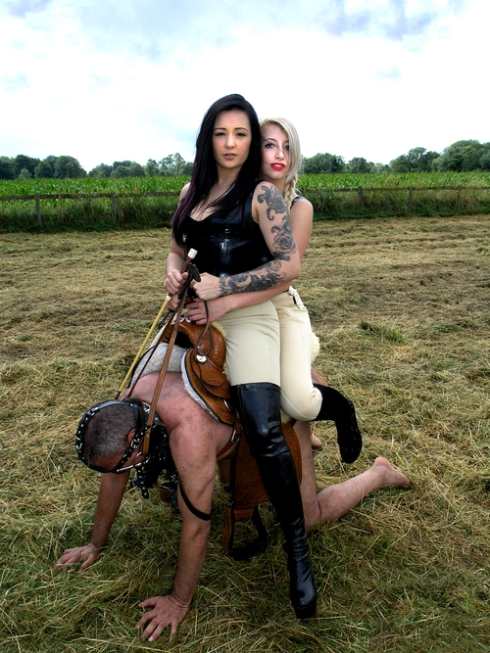
There is a growing trend in the BDSM scene for animal role-play, especially pup and kitten play. Playing the role of a pup or kitten is one of giving over complete control over to another, while the ‘Master or Handler’ expects only unconditional love and obedience from his/her animal.

Pony play is sometimes referred to as “The Aristotelian Perversion,” in reference to legend that Aristotle had a penchant for being ridden like a horse. Ponies (people involved in pony play) generally divide themselves to three groups, although some will participate in two or perhaps all three:

Cart ponies: ponies who pull a sulky with their owner.
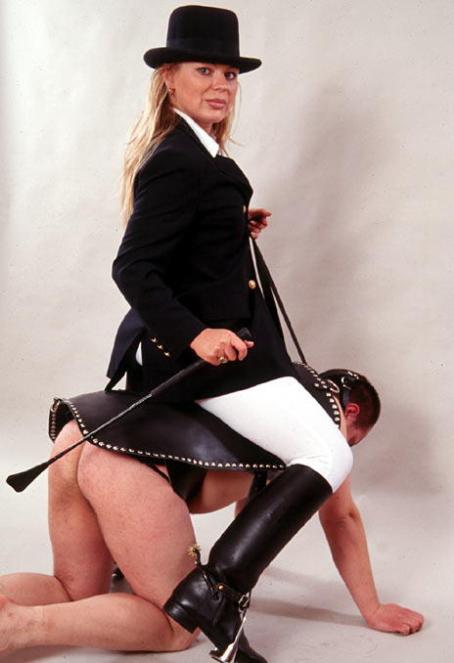
Riding ponies: ponies who are ridden, either on all fours or on two legs, with the “rider” on the shoulders of the “pony” (also known as Shoulder riding). Note that a human back is generally not strong enough to take the weight of another adult without risk of injury, so four-legged “riding” is generally symbolic, with the “rider” taking most of their weight on their own legs.

Show ponies: ponies who show off their dressage skills and often wear elaborate harnessess, plumes and so on.

A documentary film Pony Passion was produced by British pony play club De Ferre in 2003 showing their club’s activities and Born in a Barn, a 2005 documentary film, depicted the lives of several pony-play enthusiasts.
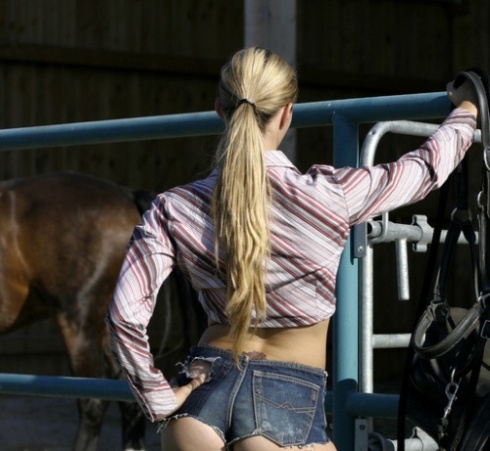
Puppy play or dog play is where at least one of the participants acts out canine mannerisms and behaviours, it is sometimes associated with leather culture. The dominant role is taken by a “Handler”, “Trainer”, “Master”, or in the case of someone who still identifies as canine, an “alpha”. The submissive may be considered a “pup” or a “dog”. Unlike other forms of animal role-play, it is not uncommon for two or more pups to play together as equals, fight for dominance, or play where one is clearly the “alpha”. Puppy play is often about being playful, mischievous, and instinctive. In relation to other BDSM play, a “puppy” who is “unowned” or “uncollared” can be referred to as a “stray”. Other elements rooted in BDSM play involve bondage and restriction with collars, leashes, cages, and hoods, the submissive’s hands are often covered in mitts, both sexual and non-sexual services are requested, and “training” may take place in order to teach commands. The submissive may be asked to bark, kiss/lick the dominant’s foot/shoe, and eat like a dog.

In kitten-play the person assumes the less serious role of a pet that keeps some independence and – as part of the fantasy – might retaliate against the partner trying to tame him or her.


































Recent Comments